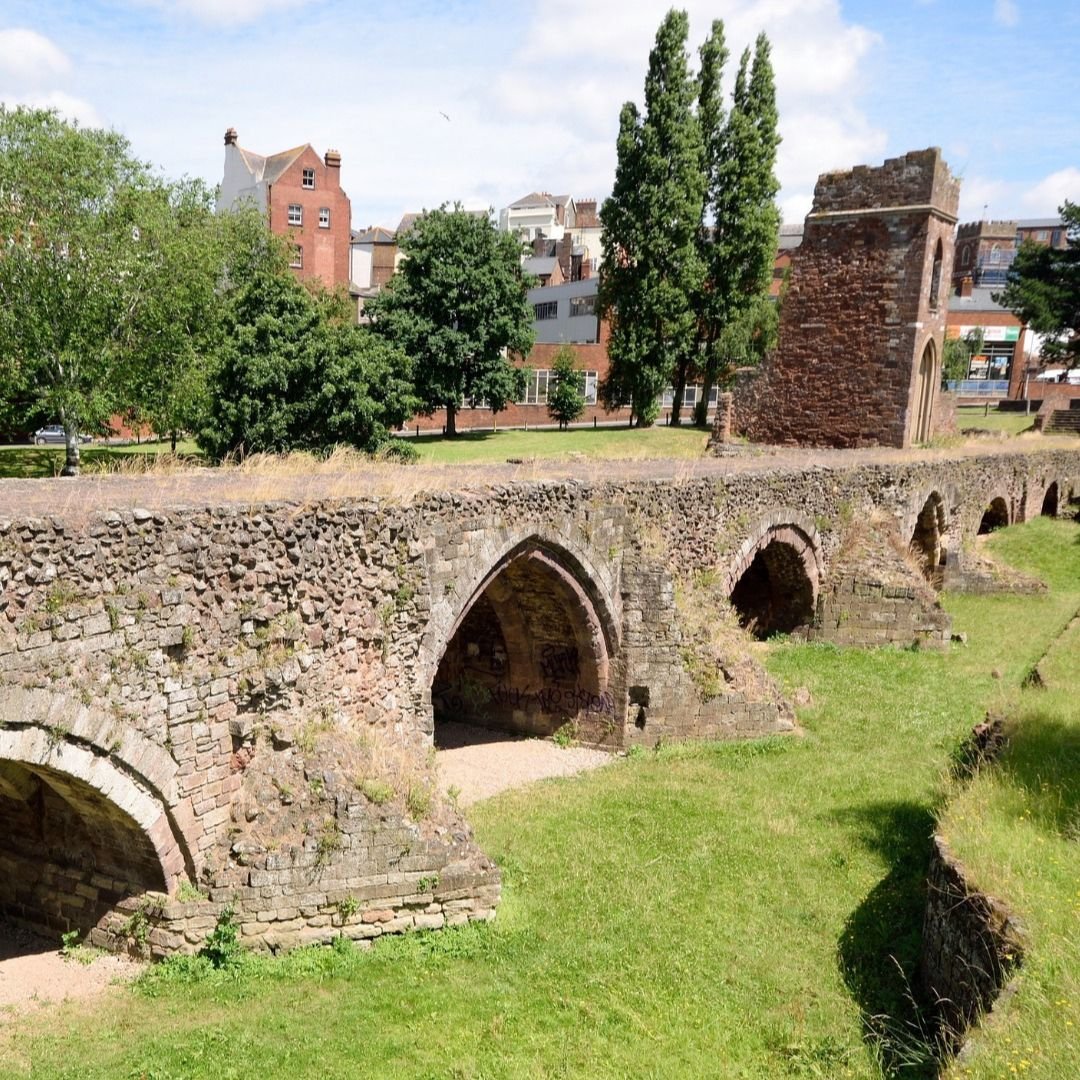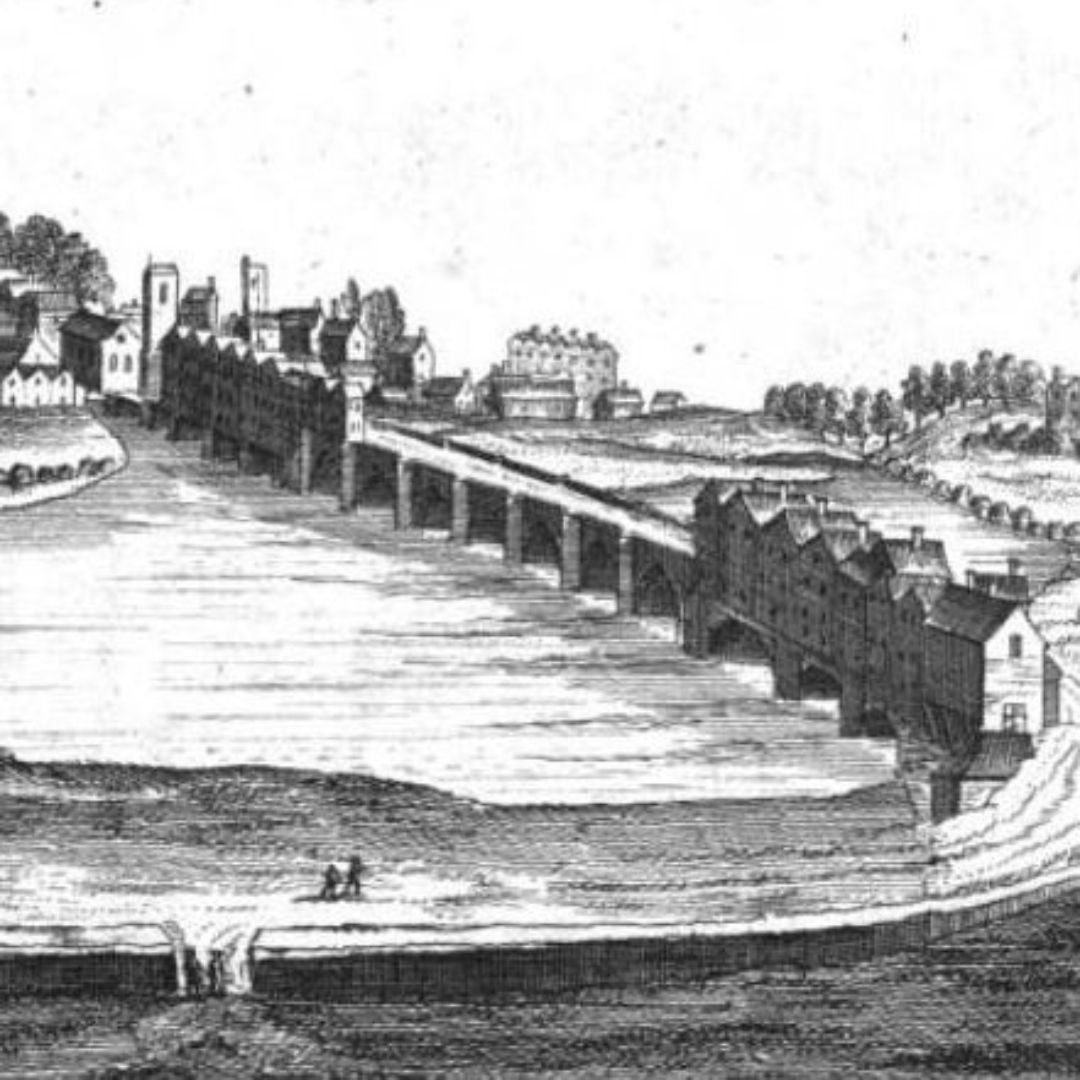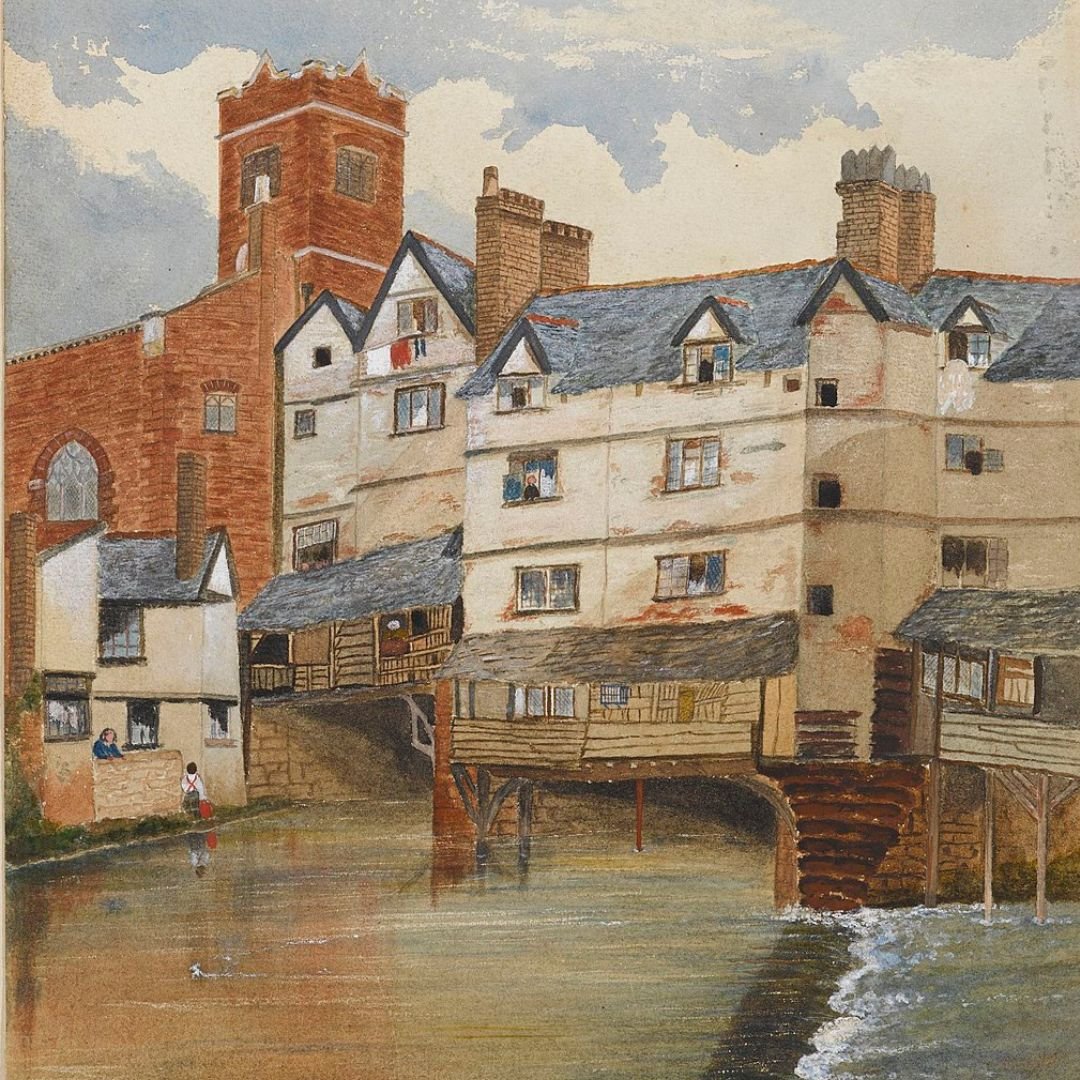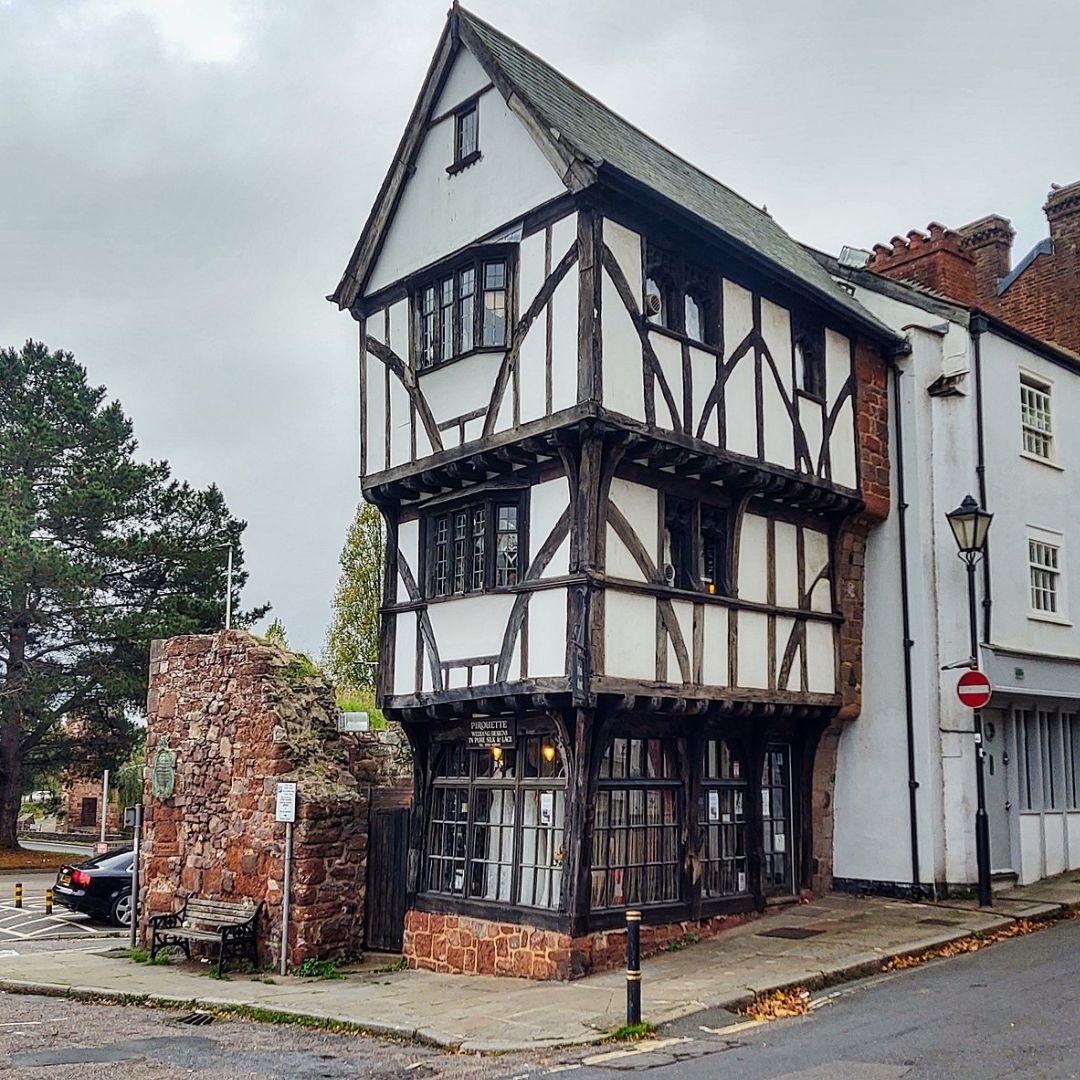Old Exe Bridge, Exeter: Oldest Medieval Stone Bridge in England
Old Exe Bridge in Exeter is the oldest medieval stone bridge in England and the oldest bridge in Britain with a chapel still on it.
Now a scheduled monument and Grade II listed, construction of the bridge began in 1190 and it was completed by 1214.
It replaced several rudimentary crossings which had been in use sporadically since Roman times - and it spanned the River Exe for almost 600 years.
The wardens and their successors in the turnpike trust use to collect tolls from carts using the bridge from outside the city (citizens of Exeter were exempt from the tolls).
The magnificent structure was at least 590 feet long, which probably had 17 or 18 arches, carrying the road diagonally from the west gate of the city wall across the River Exe.
St Edmund's Church, the bridge chapel, was built into the bridge at the time of its construction, and St Thomas's Church was built on the riverbank at about the same time.
That makes Old Exe Bridge the oldest bridge in Britain with a chapel still on it.
Bridge chapels were common in the Middle Ages, when religion was a significant part of daily life.
The chapel provided travellers a place to pray or to give thanks for a safe journey, and the alms collected were often used towards the maintenance of the bridge.
The church was built with the bridge, and its structure is an integral part of it; it had an entrance on the bridge and possibly a second entrance underneath.
The first record of a bridge chaplain is from 1196, suggesting that the church may have already been built by that date.
A record of the completed church exists from 1214, when it was mentioned in a list of churches in Exeter, along with St Thomas's Church.
It had a rectangular plan, 54 feet long by 16 feet 6 inches wide.
Around 135 major stone bridges were built in Britain in the medieval era.
Most, though not all, had some form of bridge chapel either on the bridge itself or on the approach, but only 12 are documented as having secular buildings on the bridge, of which the only surviving example with buildings intact is High Bridge in Lincoln.
The Exe Bridge had timber-framed houses on it from early in its life—the earliest record is of two shops, with houses above, from 1319.
At the height of development, all but the six arches in the middle of the river supported buildings.
They were built with their front walls resting on the parapets of the bridge and the rest of the building supported by wooden posts in the riverbed, until they were demolished in 1881.
The houses were demolished in the post-medieval era but the foundations survived.
The idea to built this historic bridge in Exeter came around 1180 when Robert Courtenay, Earl of Devon granted Nicholas Gervase land outside the city walls of Exeter, an area of marshland reclaimed by a series of water channels, or leats.
Gervase was a wealthy merchant, who intended to build a mill on the water channel that drained into the harbour.
Gervase and his son Walter, who served four times as Mayor of Exeter, raised money to build the first stone ridge cross the River Exe.
Essentially, Nicholas and Walter canvassed their wealthy friends for contributions towards a bridge across the Exe.
Such a bridge could only encourage transportation and trade, benefitting them all.
Not only did they raise enough money to build the bridge, but they were able to purchase property whose income could provide funds to maintain the bridge indefinitely.
Walter Gervase set up the Exe Bridge Trust to oversee the properties and provide funds for bridge maintenance.
The size of the bridge's piers and the reclamation of land on the Exeter side reduced the width of the river by more than half, which increased the force of the water acting on the bridge, causing damage.
The medieval bridge collapsed and had to be partially rebuilt several times throughout its life; the first recorded rebuilding was in 1286.
By the 16th century, it was again in need of repairs. Nonetheless, the bridge was in use for almost 600 years, until a replacement was built in 1778 and the arches across the river were demolished.
The area of land reclaimed from the river had grown, and several of the bridge arches were now on dry land, except during winter floods.
That bridge was itself replaced in 1905, and again in 1969 by a pair of bridges.
During construction of the twin bridges, eight and a half arches of the medieval bridge were uncovered and restored, some of which had been buried for nearly 200 years, and the surrounds were landscaped into a public park.
The bridge and chapel (pictured above) were left as a historic attraction in the centre of the new road complex, in a park area just off Frog Street.
Part of the park design incorporates foundations of medieval stone houses that lined the original river banks.
Today, Remains of the bridge are no longer used and they’re now stranded in a public park, with no water to be seen.
TripAdvisor reviews of the bridge are mixed, but most of them are positive. One recent person who visited the bridge said: “Interesting medieval arched bridge with a tower situated close to a major road junction.
”There's information on the path at the top and you can walk across, around and under it. So much more than ‘just a bridge’ and I don't understand why the structure has been given a lower rating by some due to it having been used as shelter for homeless people.”
Another person added: “Not far from Exeter Quay, actually on a small roundabout, this lovely old bridge says a lot about Exeter`s past.
”You can walk on it and i`m sure some have had picnics on the grass next to it. The arches are just as strong as they were built and you could see how narrow it was as well.”
The Old Exe Bridge is bounded by Edmund Street and Frog Street, near the river - the bridge is viewable at any time.
The address is: The Medieval Exe Bridge, Exeter EX2 4DX.
If you’re visiting Exeter, it’s also worth visiting The House That Moved, one of the oldest timber-framed houses in Devon.
This crooked medieval house in Exeter, built around 1450, was remarkably moved in 1961 by 220 feet, to be saved from demolition.
It still stands today as one of the greatest feats of engineering of its kind.
The house was built in the late Middle Ages, and was located at 16 Edmund Street, on the corner with Frog Street, probably for a wealthy merchant.
It’s located just two minutes away from Old Exe Bridge, and it’s another ‘must see’ visit if you’re planning a visit to the lovely city.
You can read more about it HERE.
If you enjoyed this blog post, please follow Exploring GB on Facebook for daily travel content and inspiration.
Don’t forget to check out our latest blog posts below!
Thank you for supporting Exploring GB.



















